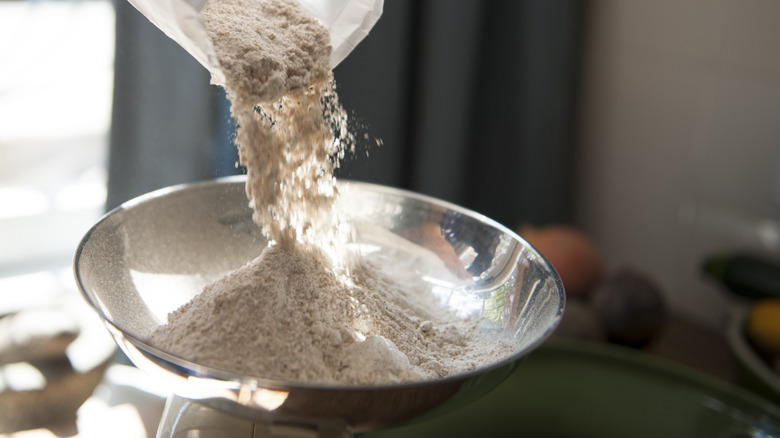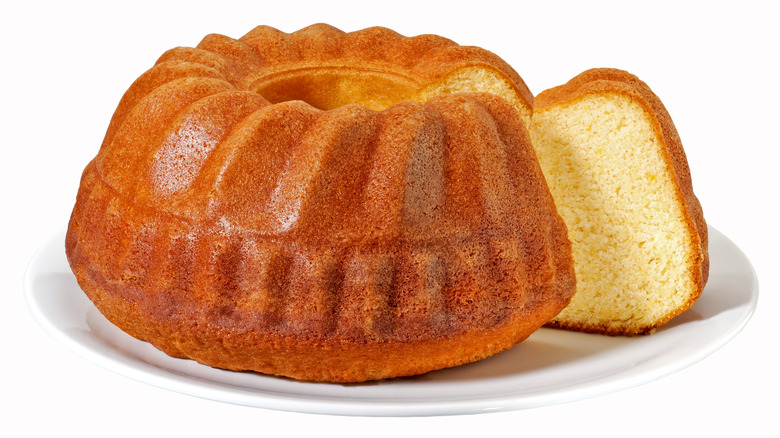Does It Matter If You Use Bleached Vs Unbleached Flour?
Most of us are aware that certain things get better with age, like wine, cheese, and people. But did you know that flour, when stored properly, also gets better with some aging? Given some time and exposure to oxygen in the air, flour gets whiter and the proteins get stronger, resulting in a better color and texture in some baked goods. However, waiting for the aging process can take time and, for millers, money, which is why bleaching agents are often used to speed up the process, creating what is known as bleached flour.
To get the aging effect, flour manufacturers add different chemical agents – including chlorine dioxide, benzoyl dioxide, and potassium bromate — to all-purpose flour. In addition to getting whiter and brighter, the process also creates a finer grain and texture and adds more volume to the end product. As when using all-purpose flour versus cake flour or all-purpose versus bread flour, bakers will get different outcomes when using bleached or unbleached flour.
Although they can easily be substituted for one another, some baked goods might have a better texture if made with bleached flour. This is particularly true for cakes. One of the benefits of bleached flour is that it allows bakers to use more fat and sugar in recipes than they can with unbleached flour. The chemicals in bleached flour break down starches and proteins, allowing the batter itself to become more sponge-like. The result is a cake that is both light and airy.
Unbleached flour leads to a coarser crumb
Cakes made with unbleached flour, on the other hand, are coarser and have a larger crumb. They are also sweeter. The chemicals in bleaching agents introduce acid into the flour, which can balance out some of the sweeter ingredients. Because spongy, soft textures are also preferred for quick breads, muffins, pancakes, and pastries, bleached flour may be the way to go when making those items.
Some bakers are concerned about the use of chemicals in their foods. Although the chemicals used in bleaching are generally recognized as safe (GRAS) by the U.S. Food and Drug Administration (FDA), potassium bromate, has been linked to cancer in animal studies. The FDA, however, says they are not used in high enough amounts to have an impact on human health. Still, California and the European Union have banned its use in food. Benzoyl peroxide and chlorine dioxide can also have a bitter aftertaste apparent to those with sensitive palates. For those reasons, several flour producers, like King Arthur or Bob's Red Mill do not offer chemically bleached flour. Instead, these companies offer items that rely on sifting and malted barley rather than chemicals to lighten the flour. Unfortunately, the specific chemical agent used by businesses that do offer bleached flours is not always listed on the products' label.
Unless you're buying freshly milled flour, most unbleached flour ages during the time it takes to get from the mill to your cabinet and continues to age if stored in a non-airtight bag. Aging unbleached flour at home will give you similar results to bleached flour. However, before you try this DIY approach, you should know how to safely store your flour and know when it's time to cut your losses and throw out your flour.

